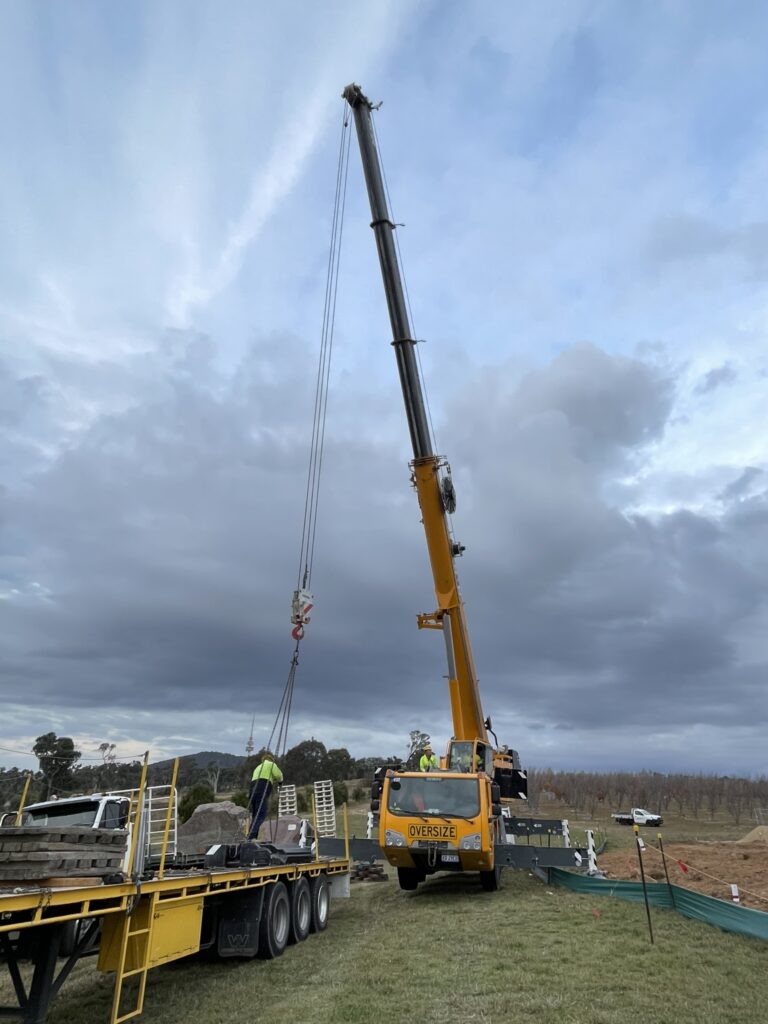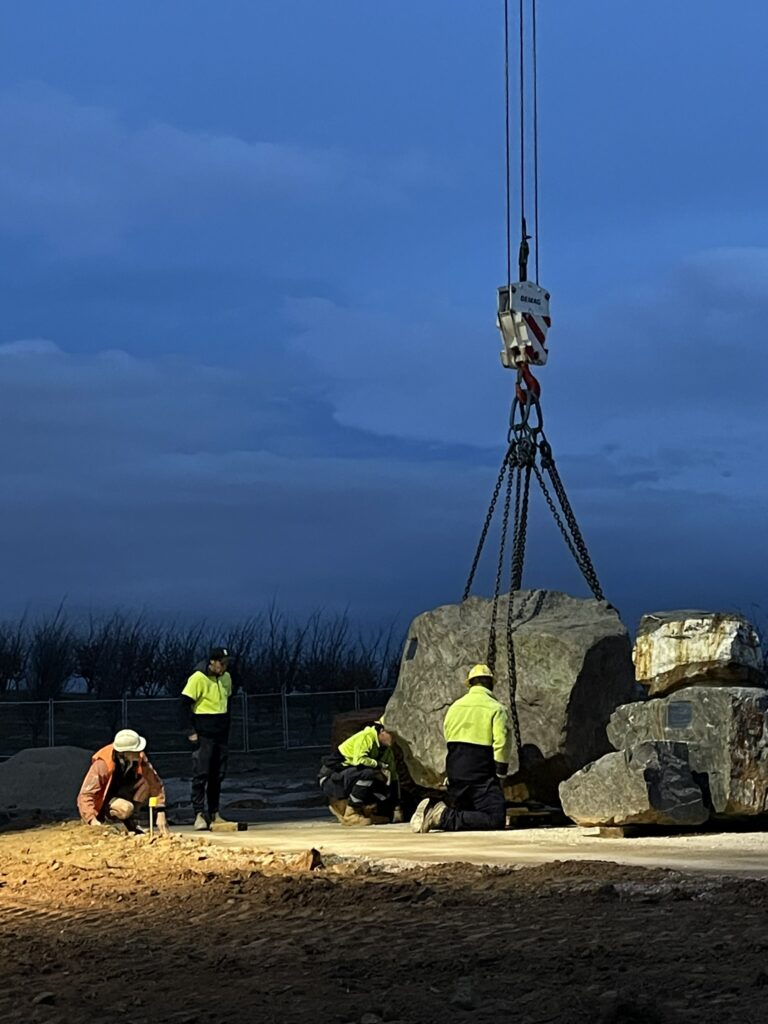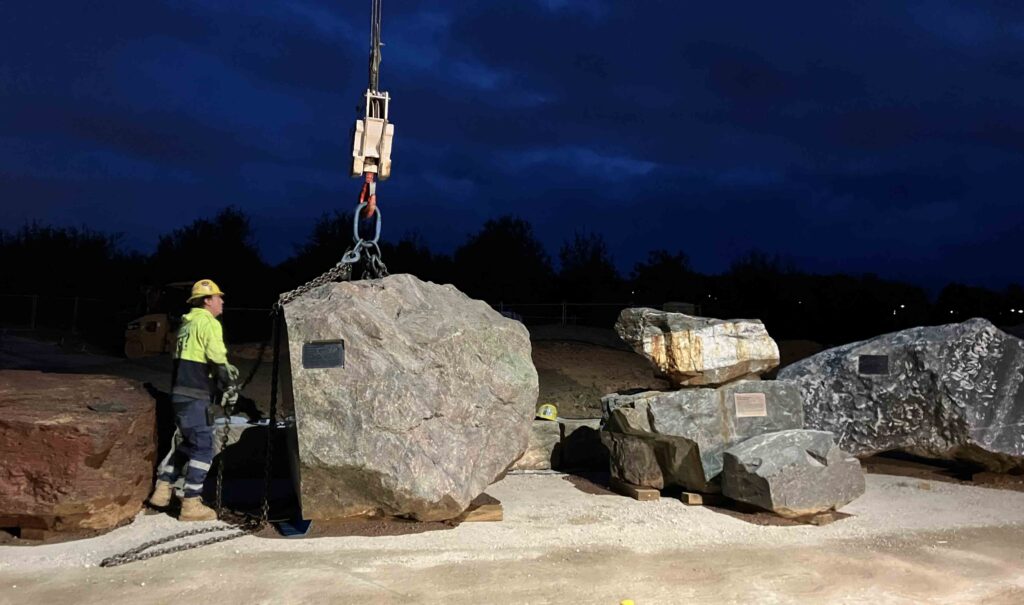
Brad Pillans, Director, National Rock Garden
Published in the National Rock Garden Newsletter No. 27, May 2024
It’s official. The National Rock Garden has broken ground and construction of Stage 1 of the garden is well under way at our new home in the National Arboretum of Canberra!
After 12 months of planning and an extensive dry period in Canberra, our successful tenderers Glascott Landscape and Civil commenced site works for Stage 1 on 15 May. The first rocks to be emplaced at the new site are the eight Federation Rocks, the last of which was moved from the previous temporary site on Thursday 30 May. Over the next few weeks, other rocks will be moved onto the site including several that have not yet been on display in Canberra, including Mawson Charnockite from Antarctica and Bulahdelah alunite from NSW.
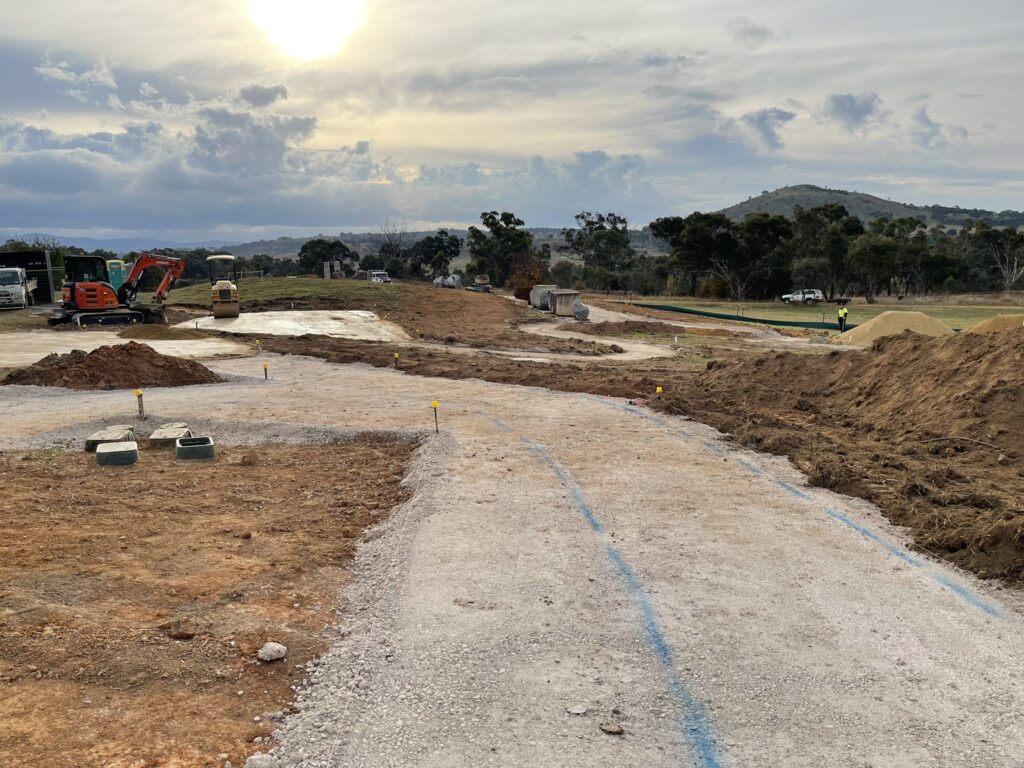
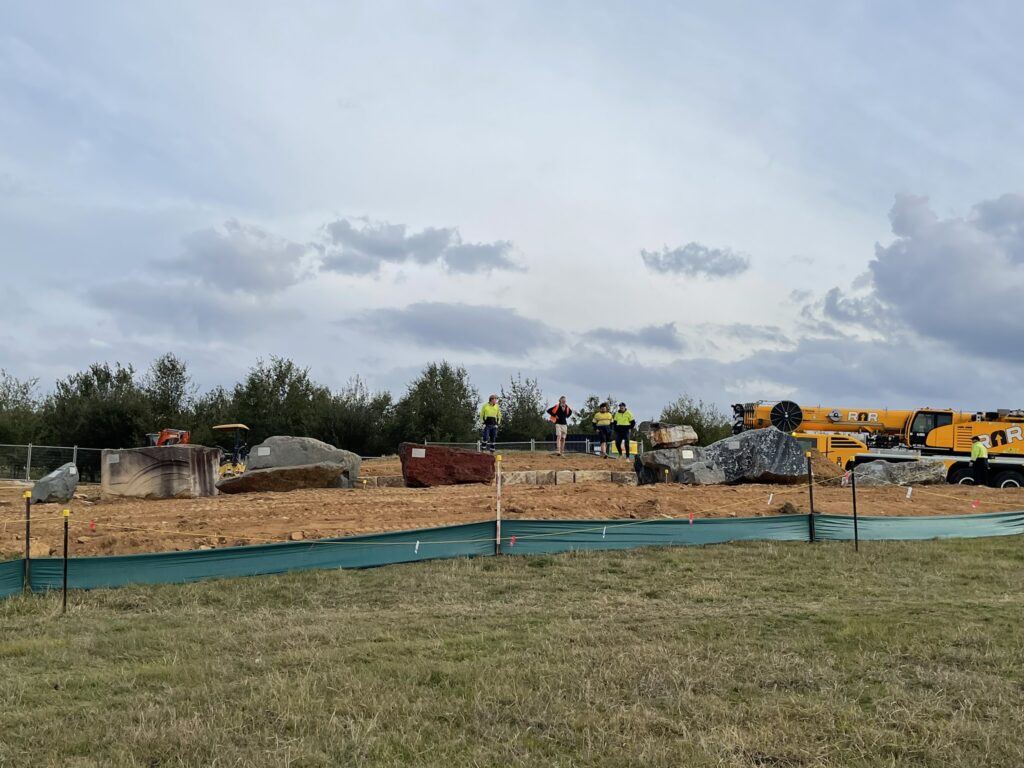
The concept design for the garden, created by Harris Hobbs Landscapes, features a series of themed rock clusters, linked by gently graded, fully wheelchair-accessible paths. The layout will be integrated with a complementary planting of Weeping Wilga trees (Geijera parviflora) in an indigenous-inspired pattern (not shown on the figure below). Stage 1 sees the installation of an entry feature rock, plus five rock clusters, including the Federation Rocks and an Indigenous welcome feature. Entry will be from Forest Drive, the main access road to the Arboretum visitor centre, which is located some 150 m south of the NRG site.
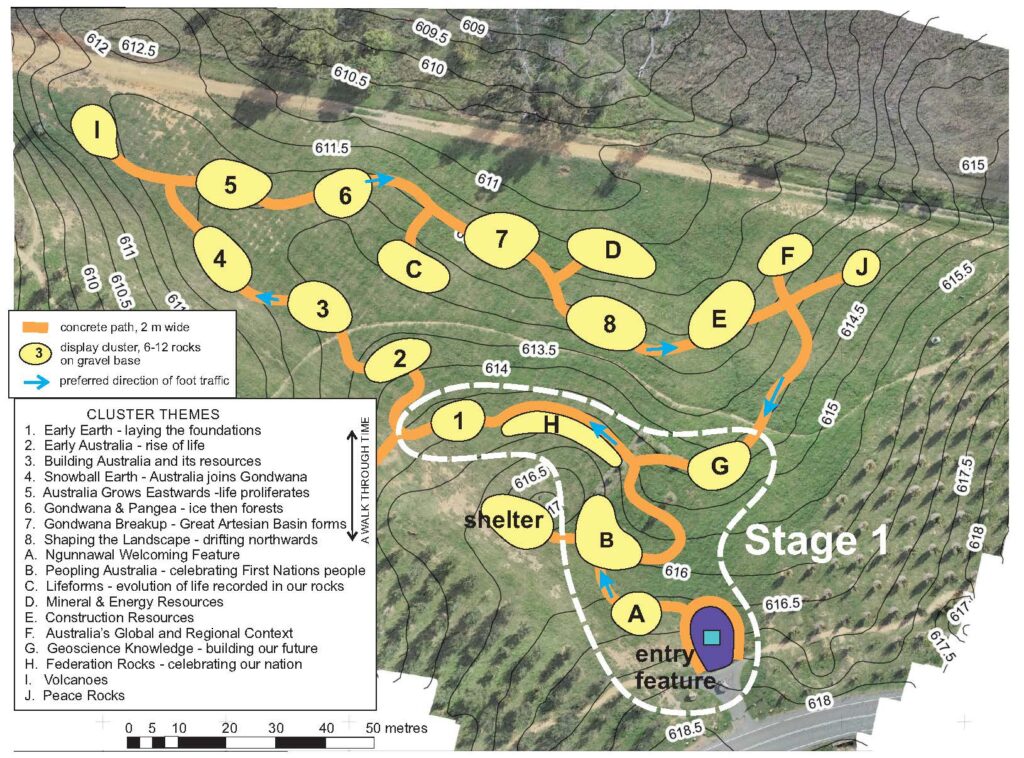
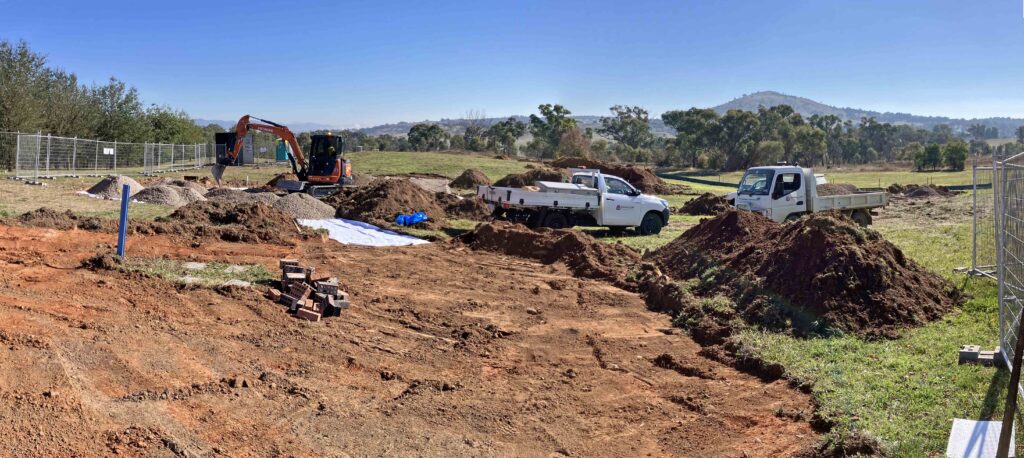
The Indigenous welcome feature rock pad is currently being created, designed in consultation with ACT Traditional Custodians. Once the pad is in place, then four beautiful, rounded boulders (tors) of local volcanic rock can be moved and installed.
Work on Stage 1 should take up to two months to complete, after which fundraising and preparation for Stage 2 will kick into high gear. The official opening of Stage 1 is planned for later in the year.
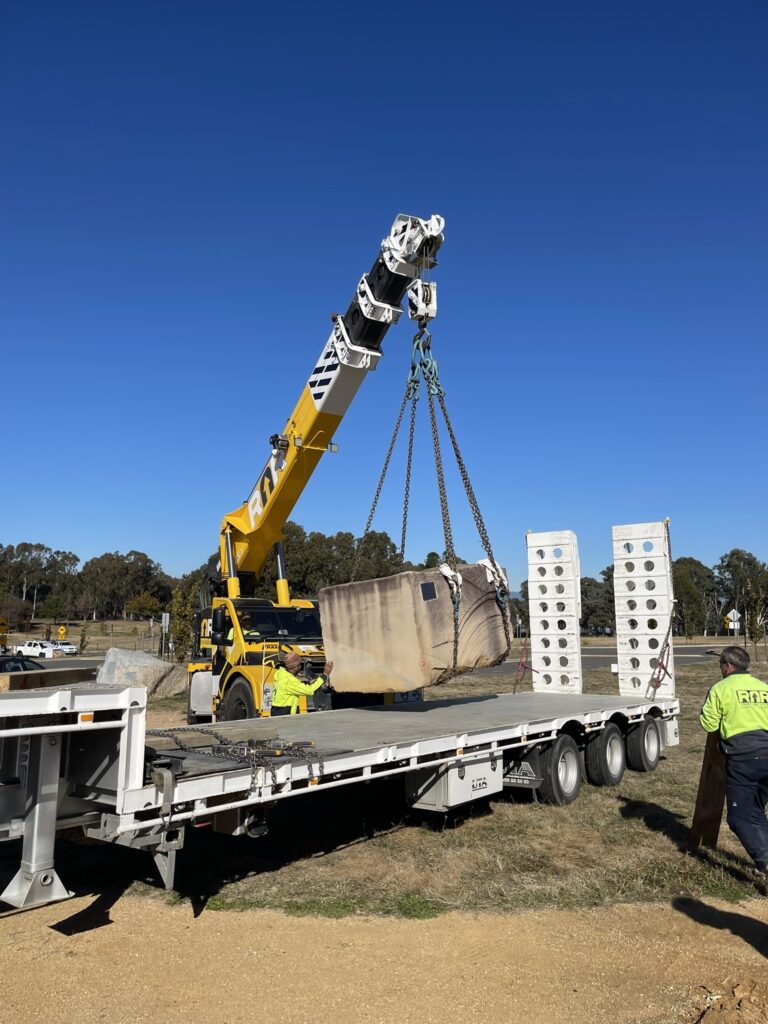
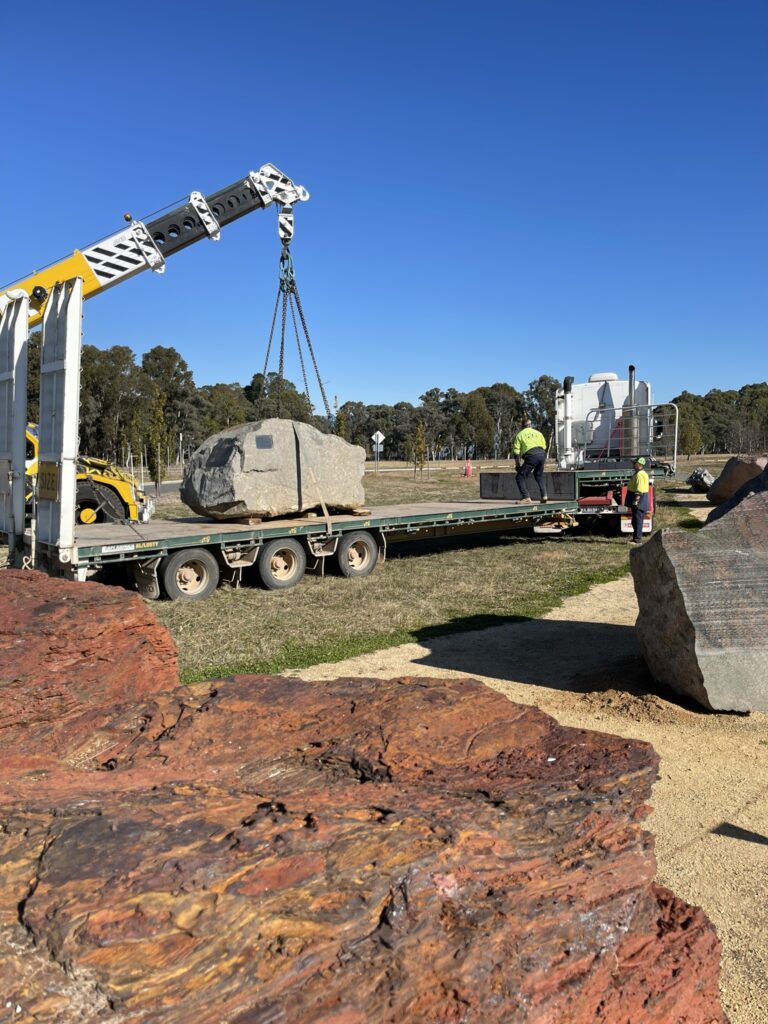
Stage 1 construction costs have been generously supported by recent donations from Partners of the NRG, the Minerals Council of Australia ($105,000) and the Geological Society of Australia ($20,000). Stage 2 construction costs will be significantly higher than Stage 1 construction costs and we are actively seeking major sponsors to fund this important next step.
